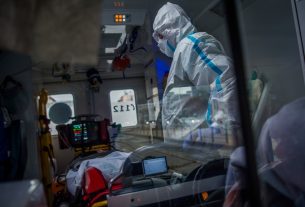- The Ericsson Programming Championship was held for the tenth time
- This year, in the jubilee year, the teams had to solve the current situation, but during a virus epidemic that broke out in a fictitious world, they had to solve the vaccine distribution and reproduction with the help of artificial intelligence
- This year’s winner of the competition was the Cloudberries team
The Ericsson Programming Championship is a national professional competition open to high school students, university students and experienced “senior” programmers. The tournament was held for the tenth time this year, and as every year, the competition was organized around a current topic, which could have been different from the viral situation, of course. This year’s winner was the Cloudberries team.
According to the competition announcement, in the fictitious world of GAIA, a stubborn viral disease has struck and has been infecting the population by spreading for a year now. A vaccine is available, but its production has capacity limitations. The teams had to develop an artificial intelligence-based solution that would distribute the limited vaccine most efficiently. This is because new production capacities are being developed in the disinfected areas, bringing the final goal of complete disinfection of Gaia closer.
A total of 594 competitors from 198 teams took part in the competition this year. A total of 12, three senior and nine student teams made it to the finals. This year, the finals were held online, so the teams worked on their programs with virtual machines in the cloud. The main prize is a LEGO® MINDSTORMS® Robot Inventor; the second place won an annual Pluralsight subscription, the third place won JBL headphones.
With the rise of 5G technology, artificial intelligence and machine learning can solve more and more problems. In increasingly complex networks, large amounts of data and computation are already inconceivable to the human brain, so in many places, we need to program computers to solve problems. In this year’s competition, entrants had to prove themselves in solving such a potential problem.
Hungarian engineers working at Ericsson’s R&D Center in Budapest also make a significant contribution to the expansion of application areas based on 5G technology. One of Ericsson’s most significant info-communications and research and development centers is located in Hungary, where professionals work in cutting-edge technologies, in addition to 5G, in machine learning, artificial intelligence, IoT, Security and Cloud. One of the most modern office buildings in Hungary, the Ericsson House, is also home to one of Hungary’s largest development laboratories and Ericsson’s innovation workshop, Ericsson Garage. Ericsson Hungary has a long history of university relations, thanks to which many new products have been published in Hungary.




